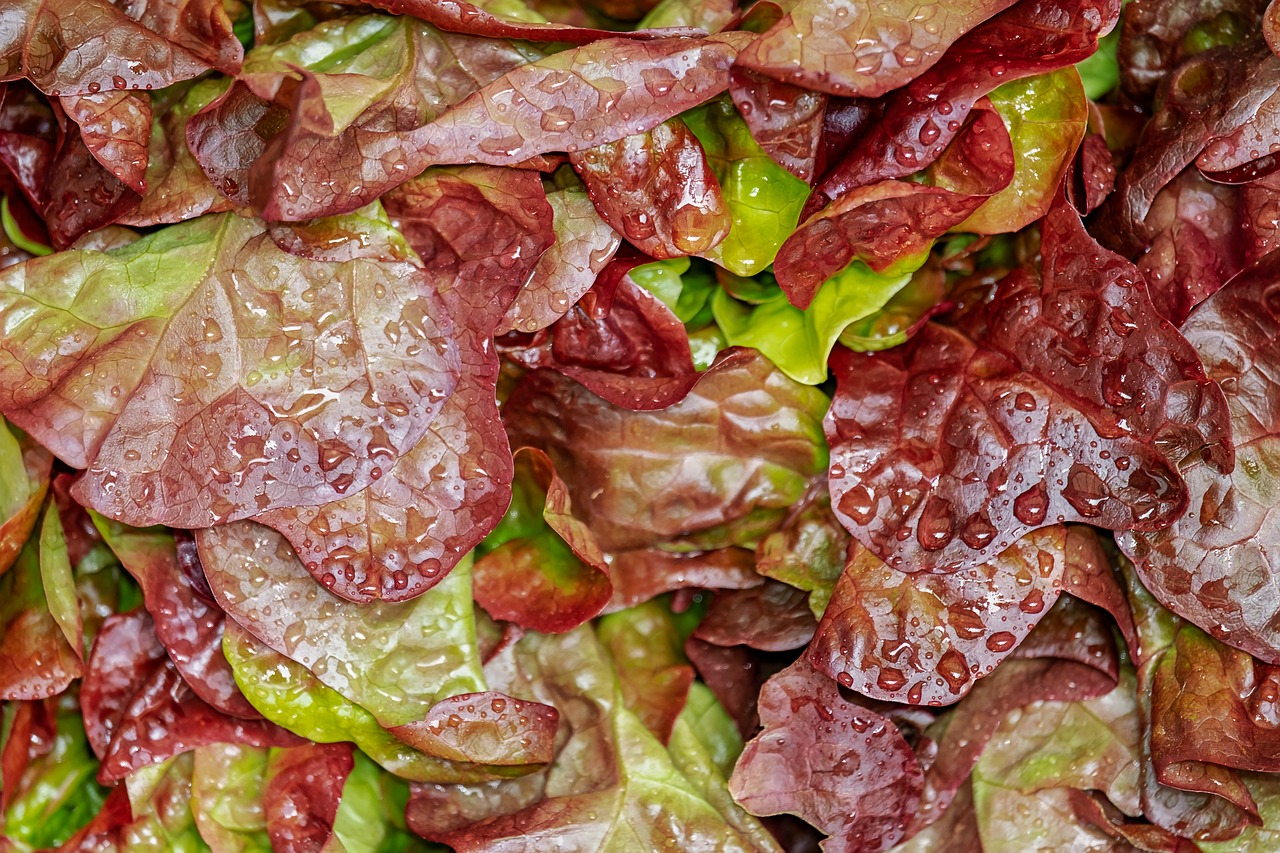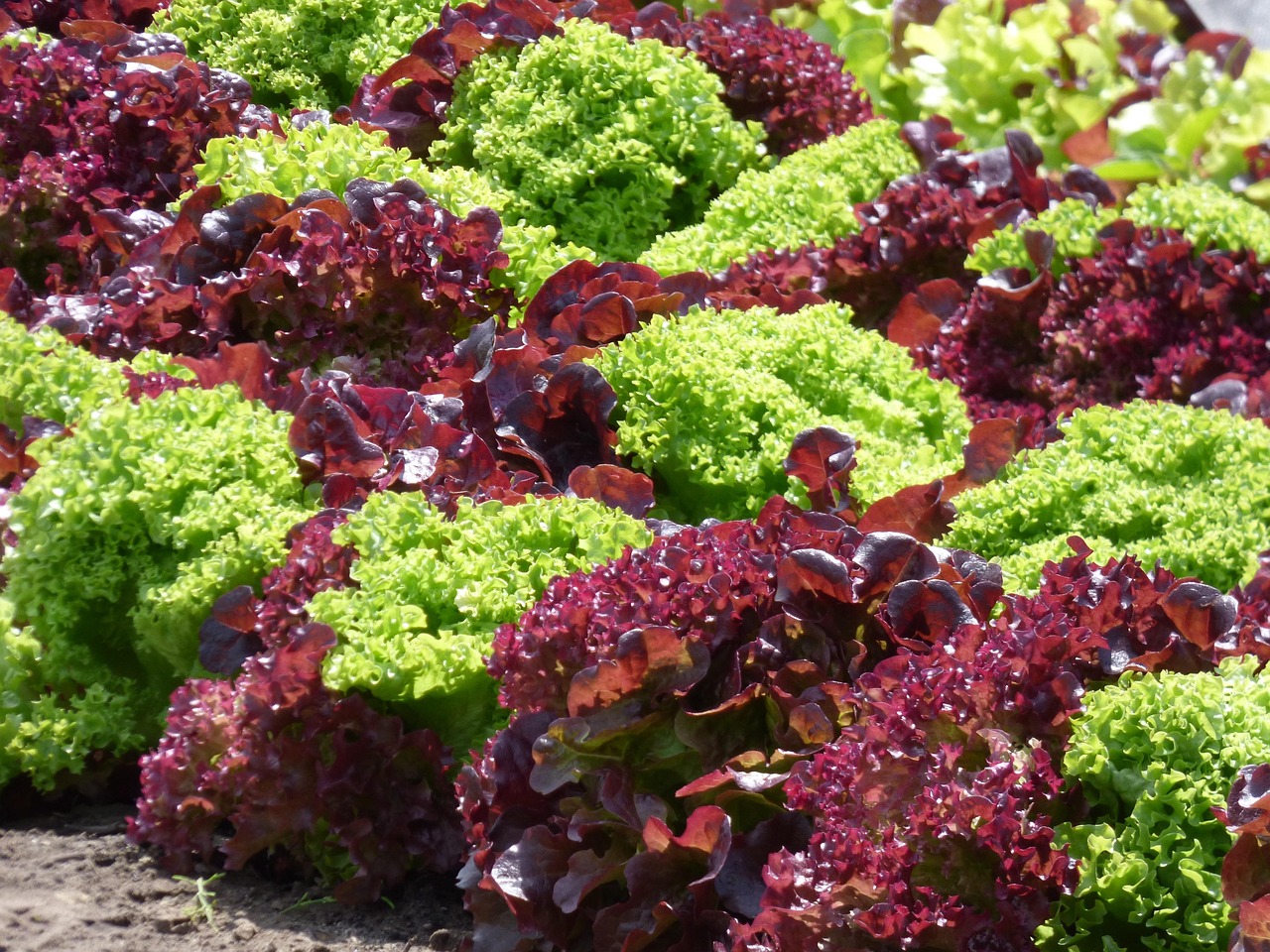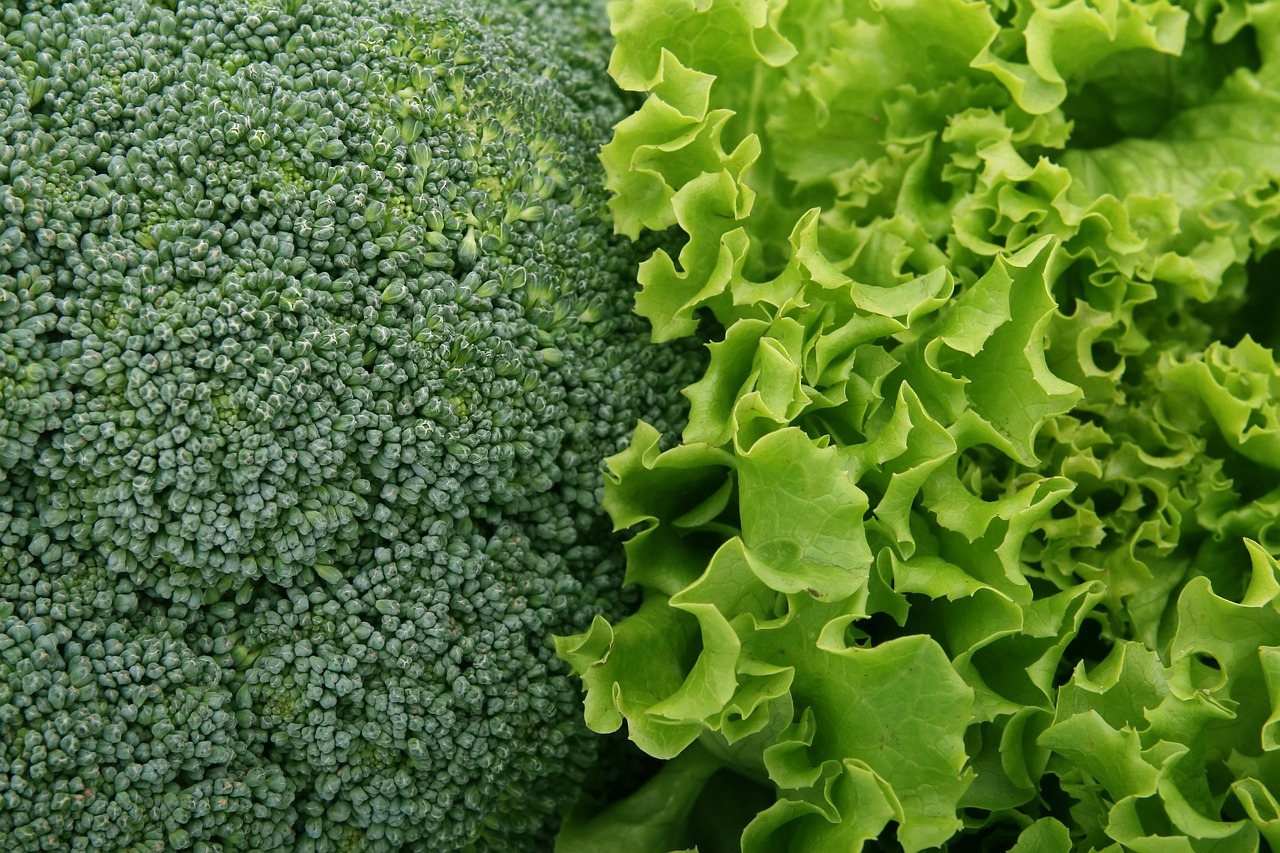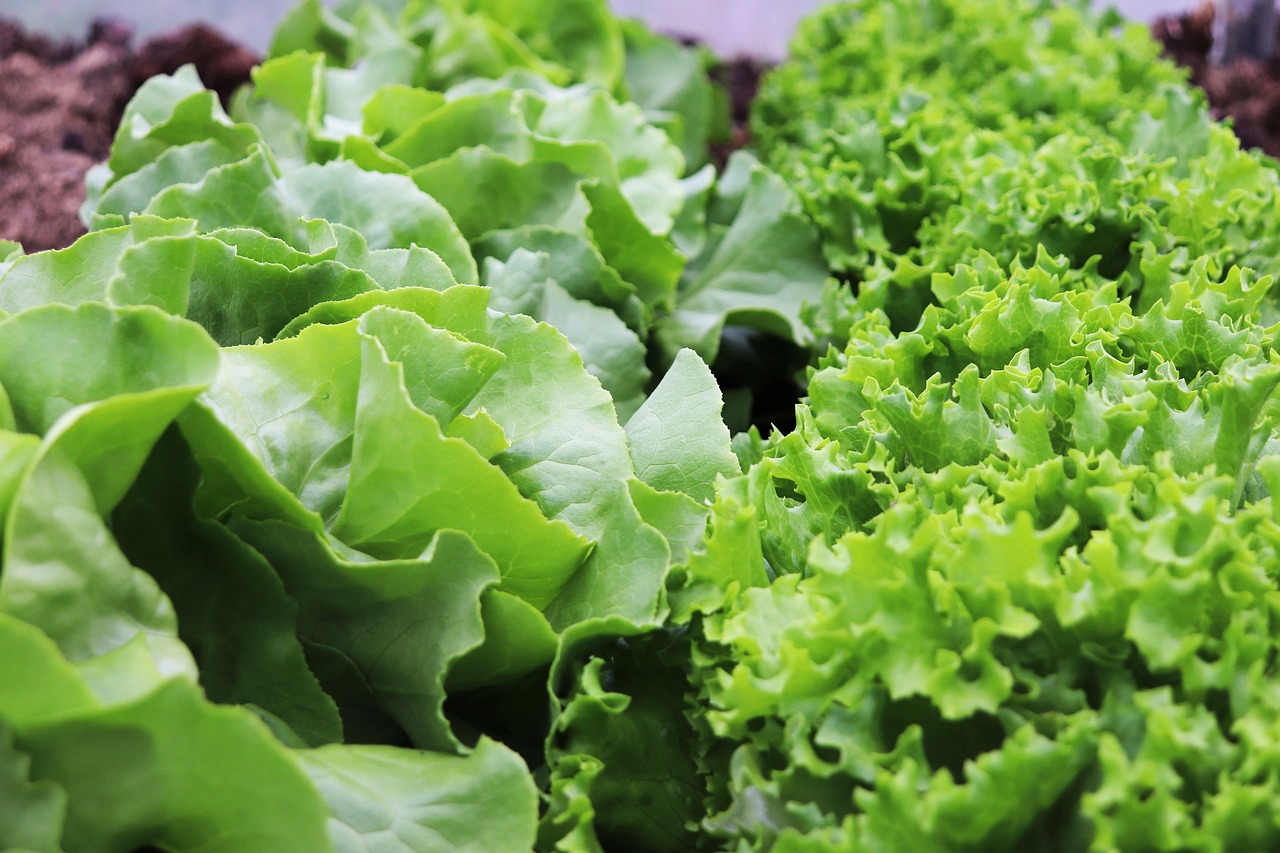To grow vibrant and healthy red lettuce, choose a well-drained, nutrient-rich soil, provide ample sunlight, and maintain consistent moisture. Fertilize appropriately and practice crop rotation to prevent pests and diseases. Regular harvesting encourages new growth and keeps the plants fresh.
Introduction to Growing Red Lettuce

Red lettuce is not only visually appealing but also offers a rich flavor and numerous health benefits. Known for its crisp texture and slightly sweet taste, red lettuce varieties such as Red Romaine and Red Leaf are popular choices for home gardeners. These varieties thrive in various climates, making them suitable for both beginner and experienced gardeners alike.
Growing red lettuce can be a rewarding experience. It provides fresh produce right from your garden and adds color to salads and dishes. With the right techniques, you can cultivate robust plants that yield plentiful harvests throughout the growing season.
Understanding Varieties of Red Lettuce
When it comes to red lettuce, several varieties stand out. Each has unique characteristics that cater to different gardening preferences and culinary uses.
| Variety | Description | Best Use |
|---|---|---|
| Red Romaine | Tall, upright leaves with a crisp texture. | Salads and sandwiches. |
| Red Leaf | Loose, tender leaves with a vibrant red color. | Fresh salads and garnishes. |
| Butterhead Red | Soft, buttery leaves with a reddish hue. | Salads and wraps. |
Choosing the right variety depends on your taste preferences and how you plan to use the lettuce. For instance, Red Romaine is excellent for hearty salads, while Red Leaf is perfect for light dishes.
Optimal Growing Conditions
To ensure the best growth for red lettuce, it is essential to create optimal conditions. These include soil quality, sunlight exposure, and watering practices.
- Soil: Red lettuce thrives in well-drained soil that is rich in organic matter. A pH level between 6.0 and 7.0 is ideal.
- Sunlight: Aim for at least six hours of sunlight daily. However, in hotter climates, providing some afternoon shade can help prevent bolting.
- Watering: Consistent moisture is crucial. Water the plants deeply but avoid waterlogging. Aim for about an inch of water per week.
By providing these optimal growing conditions, your red lettuce will not only flourish but also develop the vibrant color and flavor that make it so desirable in the kitchen.
Planting Red Lettuce
Successful growth of red lettuce begins with proper planting techniques. Understanding the timing and methods for planting will ensure robust plants that yield a rich harvest. Let’s explore the best practices for planting red lettuce.
Timing for Planting
Timing is crucial when planting red lettuce. The best time to plant depends on your local climate. Generally, red lettuce can be planted in both spring and fall.
- Spring Planting: Start seeds indoors about 4-6 weeks before the last frost date. Transplant seedlings outdoors once the soil temperature reaches at least 45°F (7°C).
- Fall Planting: In areas with mild winters, you can plant seeds directly in the garden in late summer or early fall, allowing for a harvest before the first frost.
Seed Selection and Sowing
Choosing quality seeds is the foundation of a successful crop. Opt for organic or heirloom varieties to enhance flavor and resilience.
When sowing seeds, consider the following steps:
- Prepare the Soil: Loosen the soil to a depth of at least 12 inches and mix in compost or well-rotted manure.
- Sowing Seeds: Plant seeds about 1/4 inch deep and 1 inch apart. For rows, space them 12-18 inches apart to allow for adequate growth.
- Watering After Sowing: Water gently after planting to avoid displacing the seeds. Keep the soil consistently moist until germination occurs, which typically takes 7-14 days.
Caring for Red Lettuce
Once your red lettuce is established, proper care is essential for healthy growth. This includes monitoring light, watering, and pest control.
Maintenance Practices
Caring for your plants involves several key practices that promote healthy growth and prevent issues.
- Thinning: Once seedlings reach about 2 inches tall, thin them out to ensure proper spacing. This helps prevent overcrowding and promotes better air circulation.
- Fertilizing: Use a balanced organic fertilizer every 4-6 weeks. Too much nitrogen can lead to excessive leaf growth but weak stems.
- Pest Management: Regularly inspect your plants for pests like aphids or caterpillars. Introduce beneficial insects like ladybugs or use insecticidal soap as needed.
Harvesting Red Lettuce
Knowing when and how to harvest red lettuce is vital for maintaining its flavor and texture. Harvesting too late can lead to bitterness.
- Timing: Begin harvesting when leaves are around 6-8 inches long. This usually occurs about 30-45 days after planting.
- Method: Use sharp scissors or garden shears to cut leaves just above the base, allowing the plant to continue growing.
- Frequency: Regular harvesting encourages new leaf growth. You can harvest outer leaves while allowing the inner ones to mature.
With proper care and attention, your red lettuce can provide fresh and vibrant greens throughout the growing season, enhancing your meals with both flavor and nutrition.
Common Issues in Growing Red Lettuce
Even with optimal conditions, gardeners may face challenges when growing red lettuce. Understanding these common issues can help you tackle them effectively.
Pests and Diseases
Pests such as aphids, slugs, and snails can be detrimental to your crop. It is important to monitor your plants regularly.
- Aphids: Look for small green or black insects on the underside of leaves. They can be removed by washing with water or using insecticidal soap.
- Slugs and Snails: These pests thrive in moist environments. Use barriers like copper tape or apply diatomaceous earth around plants.
Diseases such as downy mildew or lettuce drop can also affect red lettuce. Ensure proper air circulation and avoid overhead watering to reduce disease risk.
Nutrient Deficiencies
Nutrient deficiencies can lead to poor growth and unhealthy plants. Common deficiencies include:
- Nitrogen Deficiency: Characterized by yellowing leaves; remedy by applying a nitrogen-rich fertilizer.
- Pest Deficiency: Symptoms include purple veins; this can be addressed with phosphorus fertilizers.
By keeping an eye on these potential issues, you can maintain healthy plants and enjoy a bountiful harvest of red lettuce throughout the season.

Advanced Techniques for Growing Red Lettuce
For gardeners looking to optimize their red lettuce production, advanced techniques can greatly enhance growth, flavor, and overall yield. From companion planting to using specific watering strategies, these methods can lead to even more vibrant and healthy varieties.
Companion Planting
Companion planting involves growing different plants in proximity for mutual benefits. Certain plants can enhance the growth of red lettuce while deterring pests and improving soil health.
- Carrots: These root vegetables do not compete for nutrients and can help aerate the soil as they grow.
- Radishes: Planting radishes among red lettuce can deter pests like aphids due to their strong scent.
- Nasturtiums: These flowers attract beneficial insects and deter harmful pests, providing a natural form of pest control.
Integrating these companion plants into your garden can create a more balanced ecosystem, leading to healthier red lettuce and potentially higher yields.
Using Raised Beds
Raised beds offer several advantages for growing red lettuce. They provide excellent drainage, improve soil quality, and allow for better temperature control.
- Soil Quality: In raised beds, you have control over the soil mix. Use a combination of topsoil, compost, and other organic materials to create a nutrient-rich environment.
- Drainage: Raised beds encourage water to drain away from the roots, preventing issues with rot and disease.
- Accessibility: Elevated beds make it easier to tend to plants without bending over, which is particularly beneficial for older gardeners or those with back issues.
Watering Techniques
Proper watering is essential for the success of red lettuce. Implementing effective watering techniques can ensure your plants receive consistent moisture without becoming waterlogged.
- Drip Irrigation: This system delivers water directly to the plant’s roots, reducing evaporation and minimizing water waste. It helps maintain consistent soil moisture levels.
- Mulching: Apply a layer of organic mulch around your plants. This helps retain moisture in the soil and reduces the need for frequent watering.
- Morning Watering: Water your red lettuce in the early morning to allow moisture to be absorbed before the heat of the day. This practice also helps prevent fungal diseases.
Season Extension Techniques

To maximize your growing season, consider using season extension techniques. These methods allow you to grow red lettuce beyond the traditional growing months.
Row Covers
Using row covers can protect young plants from frost and pests while allowing sunlight and moisture to penetrate. They create a microclimate that can promote faster growth.
- Material: Choose lightweight fabric that allows light and air through but retains warmth.
- Installation: Secure the covers with weights or stakes to prevent them from blowing away in the wind.
Cold Frames
A cold frame is another effective way to extend your growing season. This structure captures heat from sunlight, creating a warmer environment for your plants during cooler months.
- Construction: Cold frames can be built using wood or recycled materials, topped with clear plastic or glass to allow sunlight in.
- Placement: Position the cold frame in a sunny spot, ideally facing south or west for maximum light exposure.
Harvesting Techniques for Optimal Flavor
The way you harvest your red lettuce can significantly affect its flavor and overall quality. Implementing proper harvesting techniques ensures that you enjoy the best possible taste from your crops.
Timing Your Harvest
The timing of your harvest is crucial. Harvest early in the day when temperatures are cooler to ensure crispness and freshness.
- Avoiding Stress: Do not harvest during hot afternoons as stressed plants may lose flavor and texture.
- Regular Harvesting: Frequent harvesting promotes continuous growth. Aim to harvest outer leaves regularly while allowing inner leaves to develop.
Post-Harvest Handling
Caring for your harvested lettuce is just as important as the growing process. Proper handling will maintain its quality and extend shelf life.
- Cleansing: Rinse leaves gently with cool water to remove any dirt or pests. Avoid soaking as this can lead to spoilage.
- Drying: Use a salad spinner or gently pat leaves dry with a clean towel before storing to prevent moisture-related issues.
- Storage: Store harvested lettuce in perforated plastic bags in the refrigerator crisper drawer to maintain freshness.
By implementing these advanced techniques, you can cultivate healthy and vibrant red lettuce throughout the growing season, ensuring an abundance of fresh greens for your kitchen.
Common Culinary Uses for Red Lettuce

Red lettuce is not only nutritious but also versatile in the kitchen. Its vibrant color and crisp texture make it a delightful addition to various dishes. Understanding how to incorporate red lettuce into your meals can enhance both flavor and presentation.
Salads
One of the most popular uses for red lettuce is in salads. Its slightly sweet flavor pairs well with a variety of ingredients.
- Mixed Green Salads: Combine red lettuce with other greens like spinach, arugula, and romaine for a colorful salad base.
- Gourmet Salads: Add fruits like strawberries or pears, nuts, and cheeses for a gourmet touch. A balsamic vinaigrette complements these flavors beautifully.
Wraps and Sandwiches
Red lettuce serves as an excellent substitute for bread in wraps and sandwiches. Its sturdy leaves can hold fillings without tearing.
- Wraps: Use red leaf or romaine leaves to wrap proteins like grilled chicken, tofu, or vegetables for a low-carb meal option.
- Sandwiches: Layer red lettuce in sandwiches to add crunch and a burst of color. Pair with meats, cheeses, and spreads for a satisfying meal.
Garnishes
The striking color of red lettuce makes it an ideal garnish for various dishes. Use it to enhance the visual appeal of your plates.
- Plating: Place a few leaves on the side of a dish to add color and freshness.
- Soups: Garnish soups with shredded red lettuce for added texture and flavor.
Nutritional Benefits of Red Lettuce
Incorporating red lettuce into your diet provides several health benefits due to its rich nutrient profile.
- Vitamins: Red lettuce is an excellent source of vitamins A and K, which contribute to healthy vision and bone health, respectively.
- Antioxidants: The red pigments in lettuce contain antioxidants that help combat oxidative stress in the body.
- Low in Calories: This leafy green is low in calories, making it a great choice for those looking to maintain or lose weight while still feeling full.
Final Thoughts
Growing red lettuce can be an incredibly rewarding experience for gardeners of all levels. With the right techniques, such as selecting appropriate varieties, ensuring optimal growing conditions, and implementing effective care practices, you can cultivate vibrant and healthy plants. The versatility of red lettuce in culinary applications means that your efforts will be well-rewarded in the kitchen as well.
By understanding common issues that may arise during cultivation and utilizing advanced techniques such as companion planting and season extension, you can maximize your harvest. Remember to handle harvested lettuce properly to maintain its quality and enhance its shelf life.
Incorporating red lettuce into your meals not only adds a burst of color but also provides essential nutrients that are beneficial for your health. Whether you enjoy it in salads, wraps, or as a garnish, red lettuce is sure to elevate your culinary creations. With these tips and knowledge at your disposal, you are well-equipped to grow and enjoy this delightful leafy green throughout the seasons.
